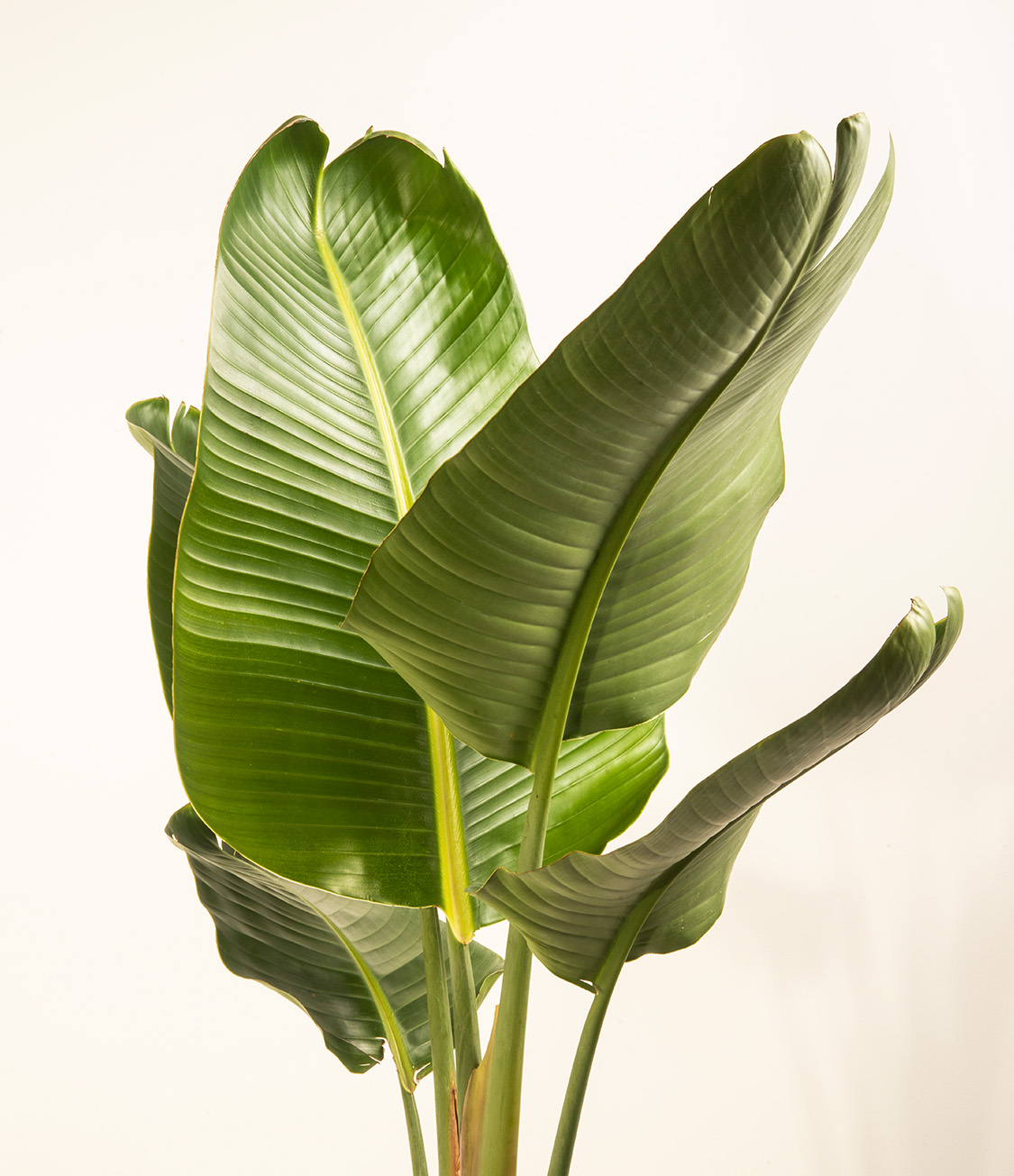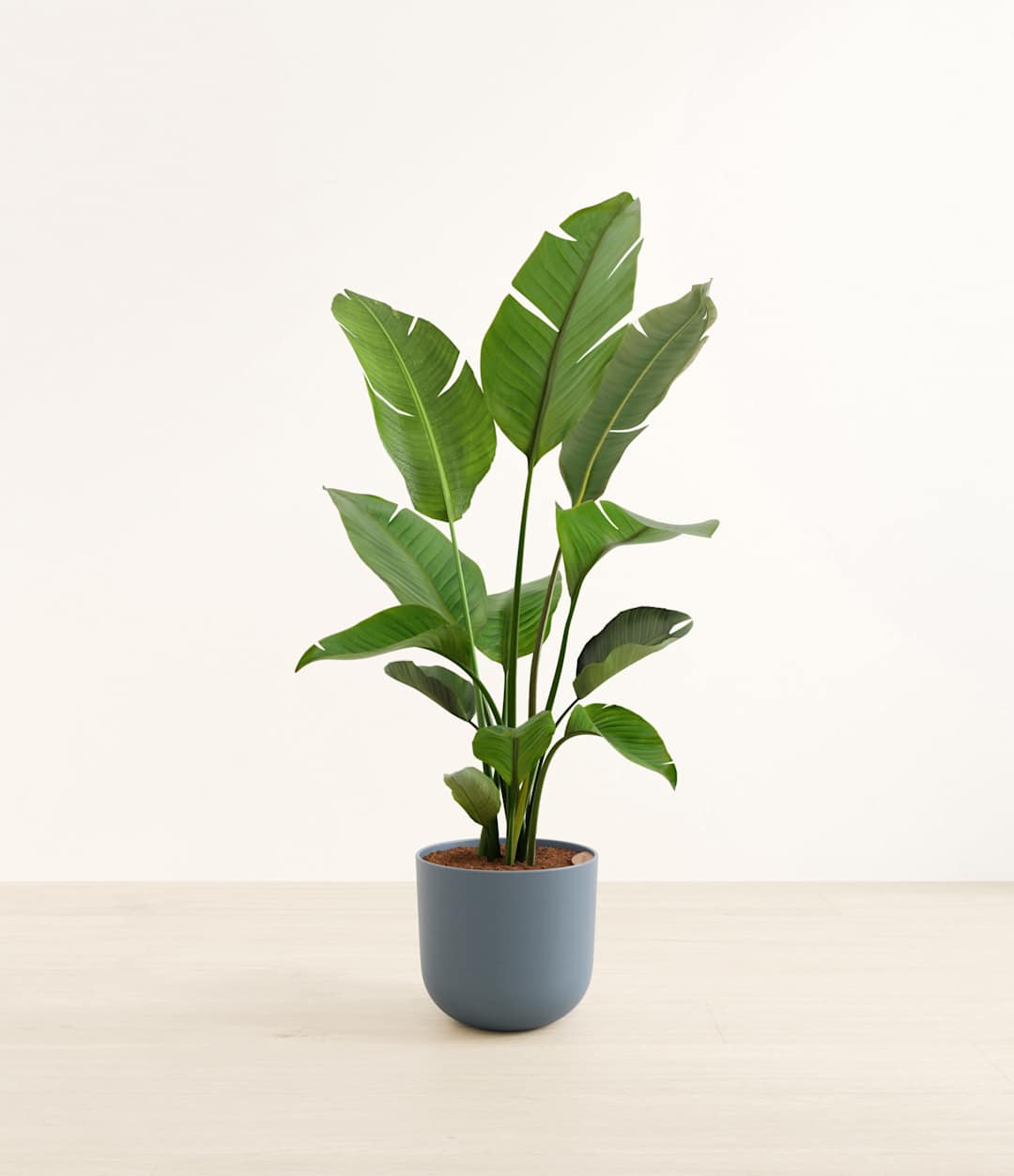How to care for Bird of Paradise (Strelitzia Nicolai)
Shop this plantAbout Bird of Paradise
Native to subtropical South Africa, the Strelitzia Nicolai, or White Bird of Paradise brings a touch of the tropics indoors with its glossy, long, and broad leaves that resemble birds in flight. A royal plant, if there ever was one, it received its scientific name, Strelitzia Nicolai, from Queen Charlotte of Mecklenburg-Strelitz of England - a passionate lover of botany and the arts.
Other common names
- White Bird of Paradise
- Giant Bird of Paradise
- Wild Banana
- Sterlitzia Nicolai
How Often Should I Water My Bird of Paradise?
With easyplant’s self-watering system, caring for your Bird of Paradise is effortless. Simply check the easyplant reservoir once a month and top it up when it’s empty!
Bird of Paradise Light Requirements
Bird of Paradise thrives in bright, direct light where sunlight streams in, but it can also adapt to bright, indirect light where sun rays are diffused. Avoid placing it in low-light areas or spaces without natural sunlight.
If you live in a warm climate, monitor your plant’s placement as leaves may scorch in intense direct sunlight, leading to dark spots or curling. Ideal locations are near south-facing windows which tend to get the most direct sunlight. If you’re concerned about scorching, east- and west-facing windows also provide ample light. If windows aren’t an option, place the plant in the sunniest spot available.
Bird of Paradise Plant Care
During its first few days at home, you may notice one or two leaves turning yellow - this is completely normal. Simply trim any dying leaves and new, healthier growth will follow. As the plant matures, older leaves will naturally yellow and die off.
For optimal growth, dust the leaves occasionally and rotate the pot by a quarter turn once a month to ensure even light exposure.
How Big Do Bird of Paradise Plants Grow?
Indoors, Bird of Paradise plants grow slowly, producing new leaves about once a month, less so in winter. They typically grow up to 90 cm wide and 1.5 m tall but can reach heights of 2.5 m after several years. It takes approximately five years for the plant to reach full maturity.
Temperature & Humidity
The ideal temperature range for Bird of Paradise is 16°C to 27°C, though it can tolerate temperatures as low as 0°C. Avoid exposing the plant to temperatures below -2°C. During the evening, maintain a temperature between 10°C and 13°C. Wherever you place your plant, keep it away from heat or cold sources like radiators, air conditioning vents, draughts, heaters, and similar appliances.
Since it’s a tropical plant, Bird of Paradise thrives in high humidity. Crispy, brown edges indicate low humidity, try placing a tray of water nearby or use a humidifier. Grouping your plant with others or positioning it in a kitchen or bathroom can also increase humidity levels. Keep in mind that too much direct sunlight can dry out the plant.
Are Bird of Paradise plants Toxic for Pets & Kids?
Though stunning, the Bird of Paradise can be mildly toxic to pets and children if ingested. If you have curious pets or small children, it’s best to keep the plant out of reach. The plant's leaves and stems are mildly toxic if ingested in large amounts. However, the flowers and seeds can cause dizziness, drowsiness, diarrhea, and vomiting in humans, cats, and dogs. If a pet ingests any part of the Bird of Paradise, take them to the vet immediately. This plant is no more toxic to cats than dogs and vice versa; both will experience the same effects if ingested. Luckily, Bird of Paradise contains a chemical called tannins, and the bitter taste should deter your pets from ingesting large amounts of the plant.
Troubleshooting Common Problems with Bird of Paradise
Some areas to look out for when caring for the Bird of Paradise are sunlight, watering, and humidity. The condition of the leaves, in particular, will let you know how the plant is fairing in your home. If your Strelitzia Nicolai’s leaves are wilting or curling, try moving it to a brighter spot. Brown spots on the leaves can indicate too much direct sunlight, so you may want to move it to a location with diffused light. If the leaf edges turn brown and crispy, it could be a sign the humidity levels are too low—consider increasing moisture in the air. Although pests are uncommon, it’s a good idea to wipe the leaves with a damp cloth if you notice any.
Frequently Asked Questions about White Bird Of Paradise Plant
- Is White Birds of Paradise a good indoor plant?
Yes, Strelitzia Nicolai (White Bird of Paradise) is a fantastic indoor plant. Its dramatic, large leaves add a tropical flair to any room, and it thrives in bright, indirect light. With the right care, it can flourish indoors for years.
- How tall does Bird of Paradise plants get?
Indoors, a Bird of Paradise will typically grow to about 150cm tall, but outdoors, it can reach an impressive height of up to 600cm. It’s a slow grower, so don’t expect it to shoot up overnight - it usually takes about five years to reach full maturity.
- Are White Birds of Paradise hard to care for?
Not at all. White Birds of Paradise is relatively low-maintenance as long as you provide the right light, water, and humidity. Keep an eye on its leaves - if they start to turn yellow, they might need more light, or if they curl, it could be a sign of too much heat. A little attention will keep it happy and healthy.





